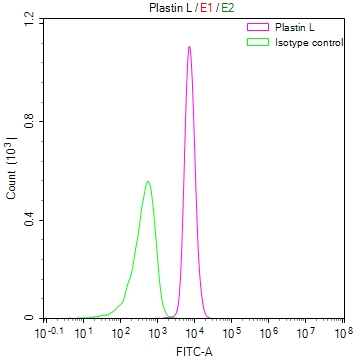The LCP1 recombinant monoclonal antibody is generated through in vitro processes using synthetic genes. The LCP1 antibody genes are first isolated from B cells that are sourced from immunoreactive rabbits, followed by their amplification and cloning into appropriate phage vectors. These vectors are then transfected into mammalian cell lines, enabling the production of functional antibodies. Subsequently, the LCP1 recombinant monoclonal antibody is purified from the culture supernatant of the transfected cell lines through affinity chromatography. This antibody shows good results in the detection of human LCP1 protein in ELISA and FC applications.
LCP1 is an actin-binding protein that plays a crucial role in the organization and regulation of the actin cytoskeleton. Its functions are diverse and include influencing cell migration, immune cell activation, microvilli formation, cancer metastasis, neuronal processes, and the regulation of immune responses. Its ability to crosslink actin filaments contributes to cellular structure and function in a variety of cell types.




